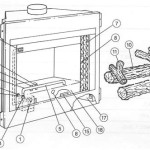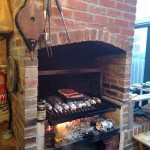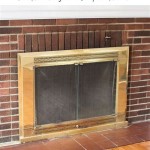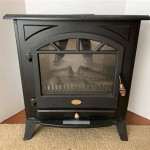```html
TVs Over Fireplaces: A Comprehensive Guide
The practice of mounting a television above a fireplace is a common design choice in modern homes. This configuration offers the potential to create a focal point in a living space, combining entertainment and ambiance. However, it also presents several challenges that require careful consideration to ensure both optimal viewing experience and the safety of the electronic equipment.
This article will explore the various facets involved in mounting a television above a fireplace, encompassing the benefits, drawbacks, and practical considerations necessary for a successful installation. It will delve into aspects such as viewing height, heat exposure, cable management, and structural support to provide a comprehensive understanding of the topic.
Understanding the Potential Benefits and Drawbacks
Mounting a television above a fireplace offers several appealing advantages. Primarily, it consolidates two prominent focal points into a single area, potentially decluttering the room and creating a more streamlined aesthetic. This can be particularly beneficial in smaller living spaces where optimizing layout is crucial. By combining the fireplace and television, the design creates a central hub for relaxation and entertainment.
Furthermore, the symmetrical nature of a fireplace often lends itself well to television placement. The fireplace mantle can serve as a natural shelf, visually framing the television and contributing to a balanced overall design. This can result in a more harmonious and visually pleasing arrangement compared to positioning the television on a separate stand or wall.
However, the perceived benefits must be weighed against the inherent drawbacks. The most significant concern is viewing height. Fireplaces are typically positioned at a lower level than ideal viewing heights for televisions. Mounting a television above a fireplace invariably raises the screen higher than recommended for comfortable viewing. This can lead to neck strain and an uncomfortable viewing experience, especially during extended periods of watching.
Another critical consideration is the potential for heat damage. While modern televisions are designed to withstand a certain range of temperatures, prolonged exposure to the heat emanating from a fireplace can negatively impact their performance and lifespan. The heat can damage internal components, shorten the lifespan of the backlight, and even cause warping of the screen. This risk is particularly pronounced with gas fireplaces, which tend to produce a more consistent and intense heat output compared to wood-burning fireplaces.
Finally, cable management can present a significant challenge. Hiding the power cords, HDMI cables, and other necessary connections behind the wall can require significant effort and potentially involve hiring a professional electrician or installer. Failure to properly conceal these cables can result in a cluttered and unsightly appearance, detracting from the aesthetic appeal of the installation.
Addressing Viewing Height and Ergonomics
Optimizing viewing height is paramount when mounting a television above a fireplace. The ideal viewing height is typically considered to be when the center of the screen is at eye level when seated. This minimizes neck strain and provides a comfortable viewing experience. However, mounting a television above a fireplace invariably raises the screen higher than this ideal level.
To mitigate the effects of an elevated viewing height, consider using a tilting wall mount. A tilting mount allows the television to be angled downwards, which can help to compensate for the increased height and improve the viewing angle. Choosing a mount with a significant degree of tilt adjustability is crucial to ensure that the optimal viewing angle can be achieved.
Another strategy to improve viewing ergonomics is to select a smaller television screen size. A smaller screen will generally be lighter and require less structural support, but more importantly, a smaller screen positioned at the same height will result in a less severe viewing angle. By reducing the screen size, the neck strain associated with an elevated viewing position can be lessened.
Furthermore, the seating arrangement should be considered. If possible, position the seating further back from the television. Increasing the distance between the viewer and the screen can help to offset the effects of an elevated viewing height. This allows the viewer to take in more of the screen at a comfortable angle.
Before committing to a permanent installation, it's advisable to temporarily prop up the television at the proposed height and viewing angle. This allows you to simulate the viewing experience and assess the potential for neck strain and discomfort over an extended period. This is a valuable step in determining whether the proposed installation is ergonomically sound and suitable for long-term use.
Mitigating Heat Exposure and Ensuring Equipment Safety
Protecting the television from heat exposure is a critical aspect of mounting it above a fireplace. The heat emanating from a fireplace can damage sensitive electronic components and shorten the lifespan of the television. Several strategies can be employed to mitigate this risk.
First, consider the type of fireplace. Gas fireplaces typically produce more consistent and intense heat compared to wood-burning fireplaces. If possible, opt for a fireplace with a lower BTU (British Thermal Unit) output. A lower BTU rating indicates a lower heat output, reducing the risk of damage to the television.
Installing a mantle shelf can provide a significant barrier against rising heat. The mantle serves as a physical shield, deflecting heat away from the television. The wider and deeper the mantle, the more effective it will be in protecting the television from heat exposure. Ensure that the mantle is constructed from a non-combustible material such as stone, brick, or metal.
Another effective strategy is to install a heat shield above the fireplace opening. A heat shield is a reflective barrier that redirects heat away from the television. These shields are typically made from metal and are designed to be discreetly mounted above the fireplace opening. They significantly reduce the amount of heat that reaches the television.
Regularly monitor the temperature above the fireplace. Use a thermometer to measure the temperature in the area where the television will be mounted. If the temperature consistently exceeds the television manufacturer's recommended operating temperature, additional measures may be necessary to protect the equipment. Consider consulting with a professional HVAC technician to explore alternative cooling solutions.
Ensure adequate ventilation around the television. Avoid enclosing the television in a tight space, as this can trap heat and exacerbate the risk of damage. Allow for sufficient airflow around the television to dissipate heat. This can be achieved by using a wall mount that allows for some space between the television and the wall, and by ensuring that there are no obstructions blocking ventilation ports on the television. Regularly dust the television and the surrounding area to prevent dust buildup, which can impede airflow and trap heat.
Addressing Structural Support and Cable Management
Ensuring adequate structural support is essential for safely mounting a television above a fireplace. The weight of the television must be properly supported to prevent it from falling and causing damage or injury. Before proceeding with the installation, carefully assess the wall structure and the weight capacity of the mounting hardware.
Locate the wall studs behind the fireplace. Wall studs provide the most secure anchor points for the wall mount. Use a stud finder to accurately locate the studs and ensure that the mount is securely attached to them. If the studs are not aligned in a way that accommodates the desired television placement, additional bracing or support may be necessary. Consider hiring a professional contractor to reinforce the wall structure and provide adequate support.
Choose a wall mount that is specifically designed for the weight and size of the television. The wall mount should have a weight capacity that exceeds the weight of the television by a significant margin. This provides a safety buffer and ensures that the mount can adequately support the television's weight. Select a high-quality, reputable brand of wall mount that is known for its durability and reliability.
Proper cable management is crucial for a clean and professional installation. Hiding the power cords, HDMI cables, and other necessary connections behind the wall can significantly improve the aesthetic appeal of the installation. Several options are available for concealing cables.
Use cable sleeves or conduits to bundle and organize the cables. Cable sleeves are flexible tubes that encase multiple cables, creating a neater and more organized appearance. Conduits are rigid tubes that protect the cables from damage and can be run behind the wall. Choose cable sleeves or conduits that are flame-resistant and compliant with local building codes.
Install wall plates with cable pass-throughs to conceal the cables behind the wall. Wall plates provide a clean and professional way to route cables from the television to the desired connection points. Use low-voltage wiring boxes to safely house the electrical connections behind the wall and provide easy access for future maintenance.
Consider hiring a professional electrician to install electrical outlets and cable connections behind the wall. A professional electrician can ensure that the wiring is installed safely and in compliance with local electrical codes. This can minimize the risk of electrical hazards and ensure that the installation is performed correctly.
```
Can I Mount My Tv Above The Fireplace

Ortal S Innovative Technology Makes It Safe To Mount A Tv Above Your Fireplace

Should I Have A Tv Over The Fireplace Klimmek Furniture

Putting A Tv Above The Fireplace May Not Be Such Bad Idea After All

Matching Your Tv Size To Fireplace

Is It Safe To Mount Your Tv Above The Fireplace Chimney And Wildlife

How To Hang A Tv Over Fireplace

20 Amazing Tv Above Fireplace Design Ideas Stone Designs Home

Should You Mount Your Tv Above A Fireplace Digital Trends

3 Alternatives To Mounting Your Television Above The Fireplace Avs








